Arab League. Middle East, North Africa, MENA
League of Arab States (LAS) Bahrain, Egypt, Jordan, Saudi Arabia
The Arab League, or the League of Arab States, is a regional organization of the Arab States in MENA region (Middle East and North Africa).
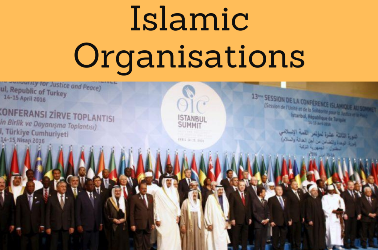
- Introduction to the Arab League
- The Arab World
- MENA region (Middle East and North Africa)
- Economy of the Arab region
- International Trade of the Arab Countries
- Greater Arab Free Trade Area (GAFTA)
- Relationships between the League of Arab States and other regional economic organizations
- Afro-Arab Cooperation
- Arab Bank for Africa (BADEA)
- Case Study:
- Orascom Telecom
- Etisalat
- Arab Development Funds
Sample: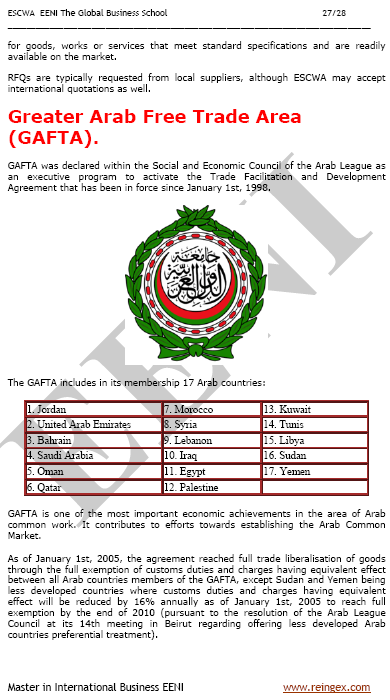
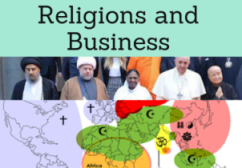
Religions and Global Business -
Religious diversity
The educational aims of the Subject “Arab League” are:
- To understand the purposes, functions, and affiliated institutions of the Arab League
- To learn about economic profile of MENA region
- To assess the benefits for the member countries and cooperation areas of the Arab League
- To learn about Greater Arab Free Trade Area

The Subject “League of Arab States” is included within the curriculum of the following academic programs at EENI Global Business School:
Master: Religions & International Business, International Business.

Doctorate: World Trade, Ethics, Religion & Business.

Languages:  or
or  Liga Árabe
Liga Árabe  Ligue Arabe
Ligue Arabe  Organization of Islamic Cooperation.
Organization of Islamic Cooperation.
- Subject Credits “Arab League”: 1

- The League of Arab States was formed in 1945 in Cairo (Egypt) with six members: Egypt, Iraq, Jordan, Lebanon, Saudi Arabia, and Syria
- Yemen joined the League of Arab States in 1945
Today, the Arab League has twenty-two members: Algeria, Bahrain, Comoros, Djibouti, Egypt, Iraq, Jordan, Kuwait, Lebanon, Libya, Mauritania, Morocco, Oman, Palestine, Qatar, Saudi Arabia, Somalia, Sudan, Syria, Tunisia, Emirates, and Yemen.
The League of Arab States is implicated in political, economic, Cultural, and social programs intended to promote the interests of the Arab member economies.
- The League of Arab States is rich in resources, with a large petrol and natural gas resources
- The Arab League also has great fertile lands (Sudan, the food basket of the Arab world)
The Arab world is a rich compound of many and different influences.
- Various ethnic, linguistic and Religious groups live in the Arab region
- Arabic language and Islam stand for its main cultural characteristics
- Arab people, spread over a huge area, benefit from common history links
- Arabs (21 countries) consider being part of one nation (Ummah)
- Arab people are united through their participation in the League of Arab States
- Agriculture is the main economic activity. The largest food crops are wheat, barley, rice, maize, and millet; mainly consumed within the Arab region, while cotton, sugarcane, sugar beets and sesame are exported as cash crops
- Only some Arab Countries have petroleum and natural gas resources
- Other natural resources in the Arab Countries are iron-ore, lead, phosphate, timber, and manganese
- Saudi Arabia is the largest economy in the Arab world
- Qatar is the richest developing country in the World (GDP per capita)
The Arab people use Arabic language. Farsi, the language of Iran, and Urdu, the language of Pakistan and some parts of India, are written in Arabic script. The influence of Arabic language has been most important in the Islamic Countries. Arabic influence on other languages: Sindhi, Punjabi, Gujarati, Berber, Kurdish, Pashto, Persian, Swahili, Urdu, Hindustani, Turkish, Cypriot Greek, Malay, Rohingya, Bengali, Tagalog (the Philippines) or Indonesian.
The Arab League belongs to:
MENA region (Middle East and North Africa)
- Middle East: Bahrain, Cyprus, Iran, Iraq, Israel, Palestine (Israeli-occupied Gaza Strip and West Bank), Jordan, Kuwait, Lebanon, Oman, Qatar, Saudi Arabia, Syria, Turkey, Emirates (UAE), Yemen
- North African Countries: Algeria, Egypt, Libya, Morocco, and Tunisia
MENA region (Middle East and North Africa) has huge petroleum and natural gas reserves that make it an essential source of global economic stability. MENA region has 70% of the petroleum reserve and 46% of the natural gas reserves in the World.
(c) EENI Global Business School (1995-2025)
Top of this page

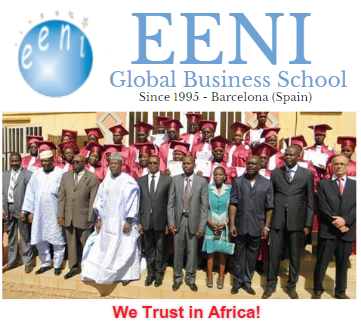





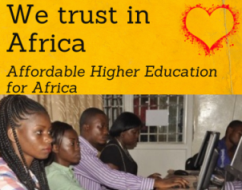


 WhatsApp
WhatsApp